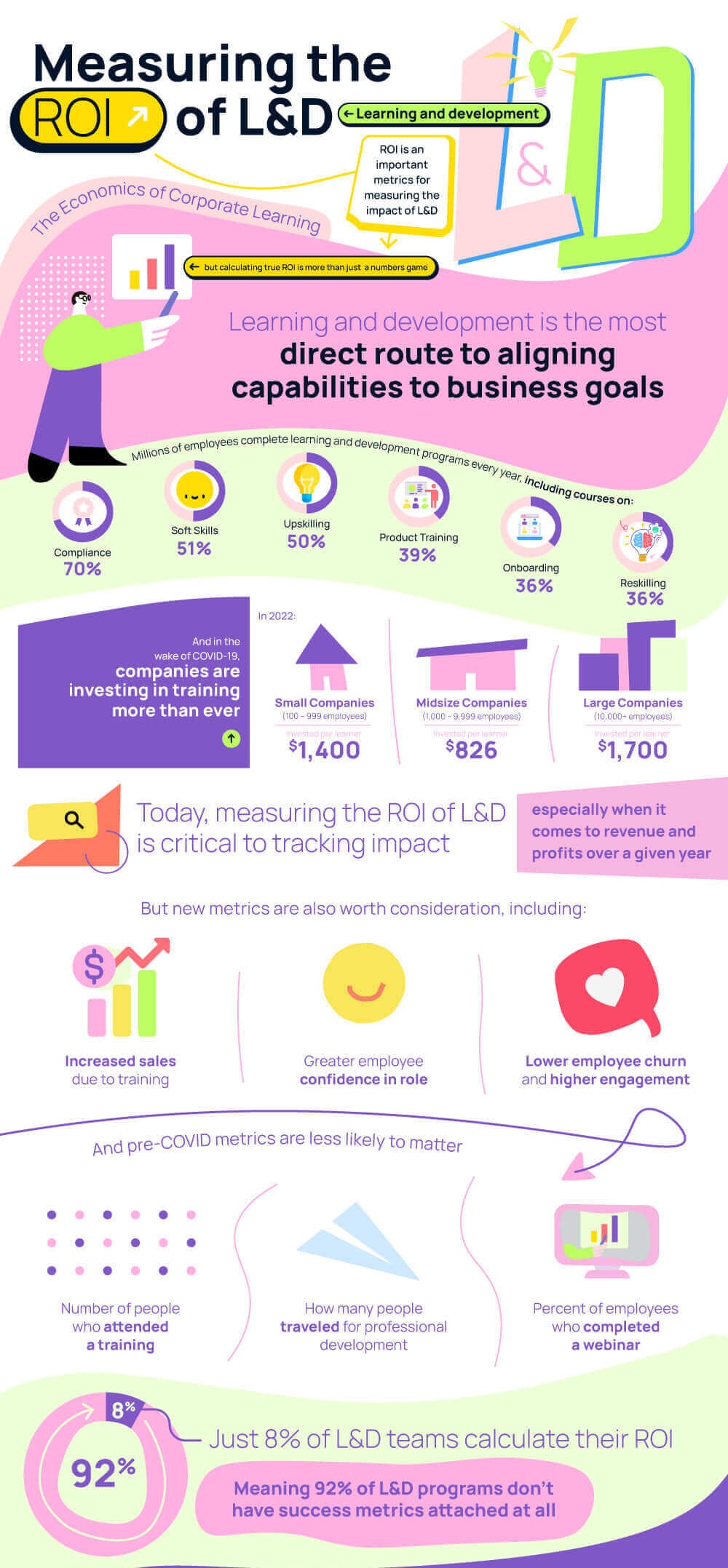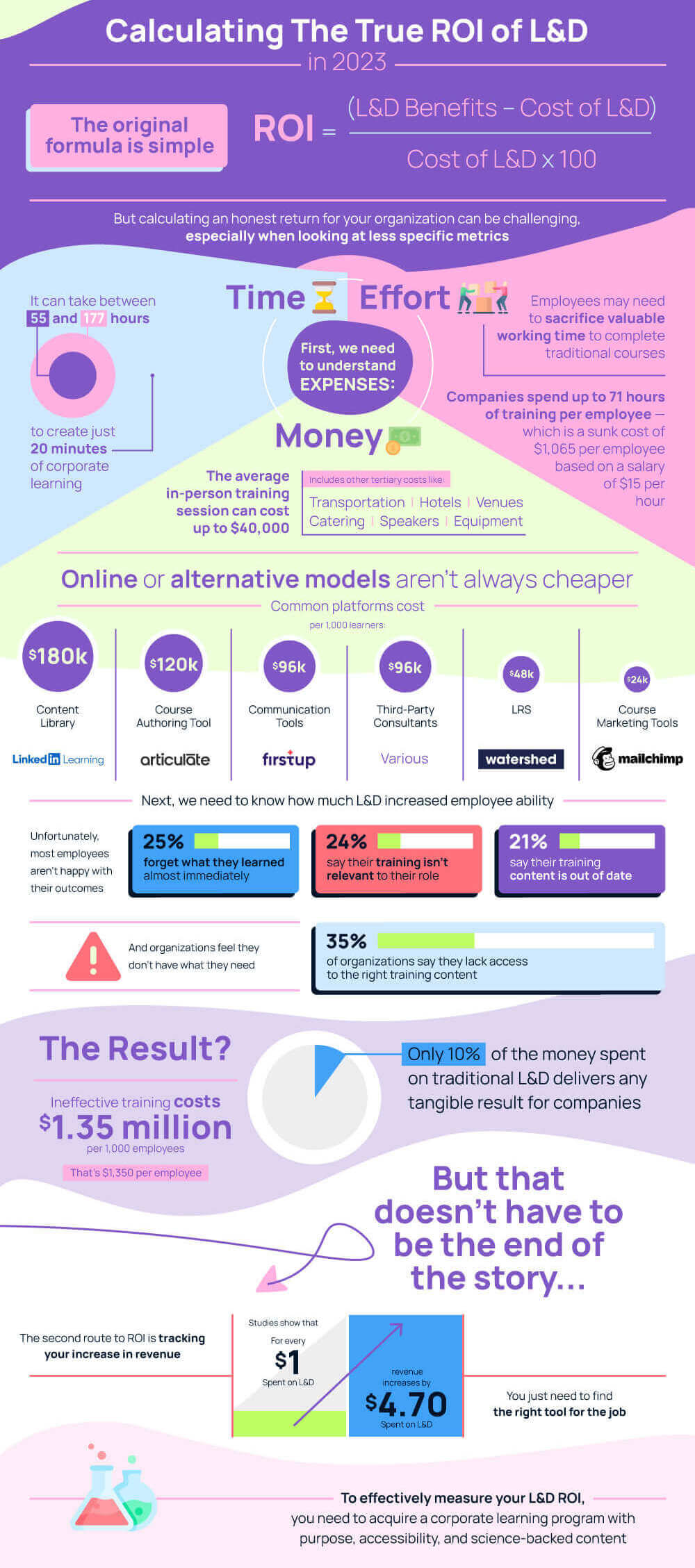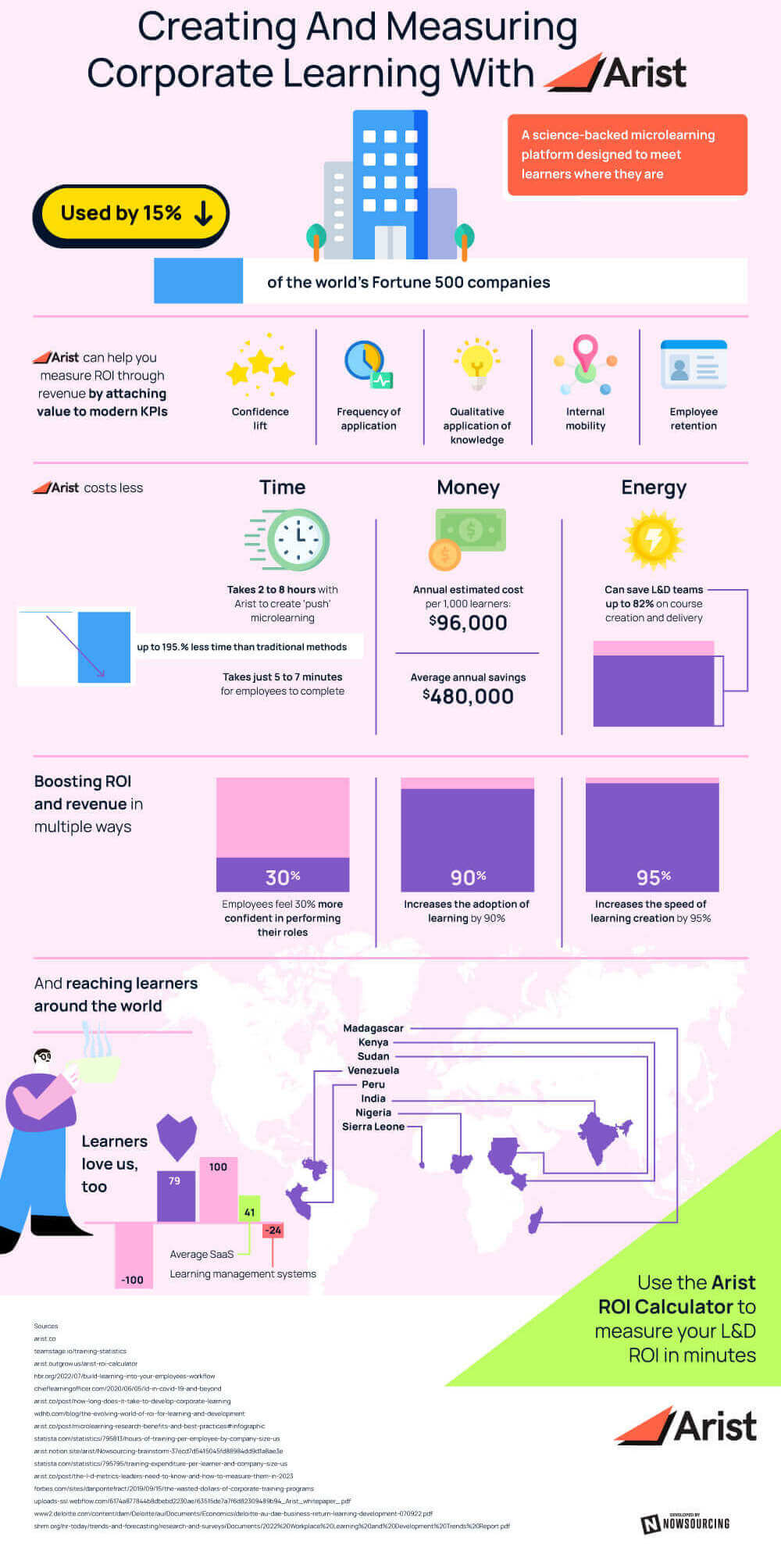Learning and development, or L&D, is the most direct route to align the capabilities of workers to business goals. This makes L&D and tracking the impact it has on a business incredibly important, but tracking the ROI of employee learning can often be more complex than just a numbers game. Millions of employees every year go through dozens of different types of training courses, including compliance and soft skills training to onboarding to building on existing skills to even introducing new ones.
In the wake of COVID, companies are now more than ever investing in corporate learning. This increased spending means that companies need to measure the impact of learning to make sure they’re getting their money’s worth. But many metrics such as attendance to training and how many employees traveled for professional development are starting to mean less and less.
These old metrics are being replaced by new ones, such as how confident employees are in new roles and employee engagement and churn rates. With only 8% of L&D teams calculating their ROI, over 90% of L&D programs don’t have success metrics attached to them at all.
Calculating the ROI of corporate learning can be a difficult task as the cost of L&D stretches beyond just money. While teaching employees costs more than money, it can still be an incredibly expensive endeavor. In-person training events often involve renting a venue, hotels, transportation, and food for attending employees, as well as paying speakers, event organizers alongside all the necessary equipment, all adding huge amounts to the cost. This leads to the average in-person training session costing up to $40,000.
In addition to the sheer cost of traditional training, employees need to take time off in order to complete courses – companies spend up to 71 hours of training per employee, quickly adding up to hundreds or thousands of man hours wasted that could’ve been spent to complete work and achieve goals.
Creating and setting up courses can also take an incredible amount of time. It can take as high as 177 hours of work to create just 20 minutes of corporate learning. Many turn to online alternatives to in-person events, but these can often cost the same if not more than traditional learning methods.
Spending this much time, money, and effort would be worth it if employees were taught the skills they need, but very commonly traditional learning methods prove to at best ineffective and at worst entirely irrelevant. Many employees outright forget what they learned almost immediately due to a lack of reinforcement.
Employees are also very often taught out of date information or information that doesn’t relate to the work they do at all. Companies themselves also feel that they don’t have what they need for proper employee training – 35% of organizations say they lack access to the right training content.
Be sure to learn about microlearning and how it teaches employees what they actually need to know for their jobs while saving time and money. It may be just the experience that your workforce needs.



Infographic Source: https://www.arist.co/post/measuring-the-roi-of-learning-and-development-programs
